Advanced Composition Techniques
Let's get mathematical
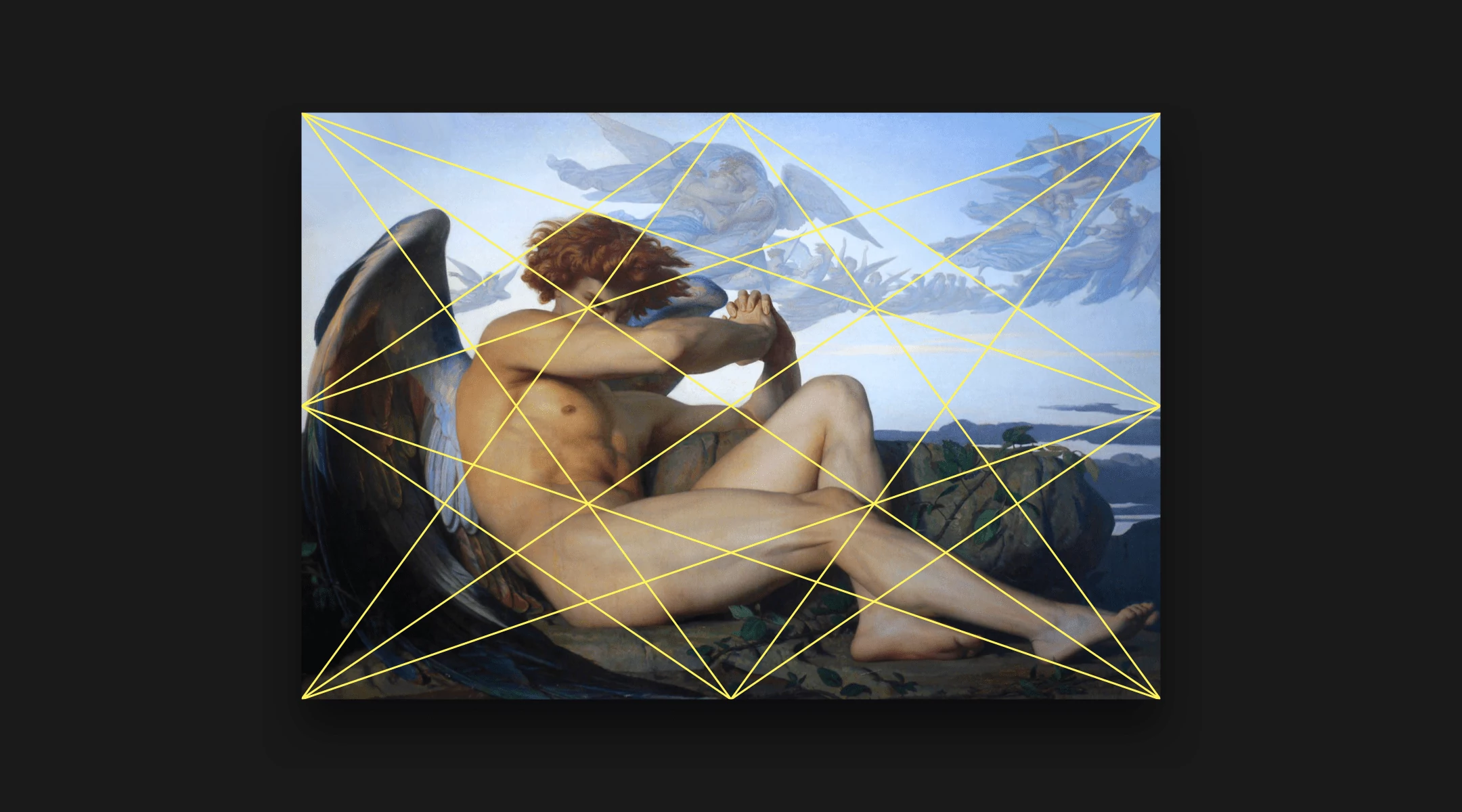

We've talked about some common techniques for creating pleasing compositions, like the rule of thirds, and the rule of space, but throughout history artists have developed and followed increasingly complex systems and rules for creating compositions. It's important to note when investigating composition in historical artworks, that there is no 'secret formula' that all great art follows. The golden rectangle isn't hidden in every masterpiece. Cultures and art movements develop composition techniques that reflect their taste. "Good" composition is subjective and tied to the unique cultural values of a time and place. Over time, many delightful and esoteric systems were invented, expanded on, and eventually thrown out by the generations that follow. Composition techniques are a kind of fashion, they come and go, but they're all interesting.
Below we explore a handful of composition systems from the last 500 years in Western Art. Most of these examples come from the brilliant book "The Painter's Secret Geometry" by the artist and historian Charles Bouleau. We'll expand on compositions found in non-western art in another essay, since we still have much research to do.
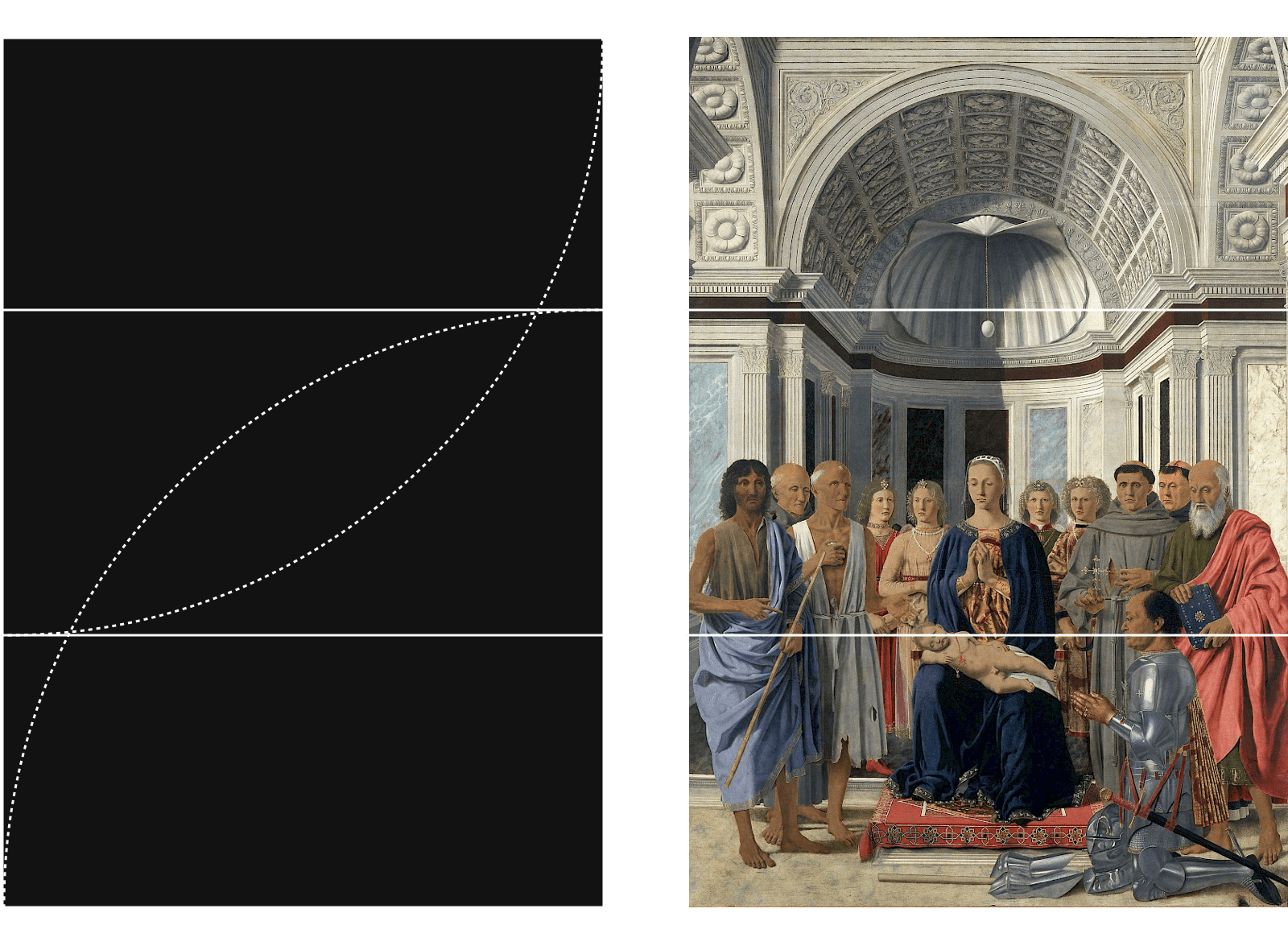 Every rectangle contains two implied squares, the height and width of the short side of the rectangle. By rotating the short sides of the rectangle, you can find the two lines of rabatment in the rectangle. Placing focal points along these lines creates a strong composition.
Every rectangle contains two implied squares, the height and width of the short side of the rectangle. By rotating the short sides of the rectangle, you can find the two lines of rabatment in the rectangle. Placing focal points along these lines creates a strong composition.
The Rabatment of the Square is similar to the rule of thirds—a relatively simple way to find a pleasing location for a focal point within a rectangle. In theory, the rectangle is a primal geometric form, and that when viewing a rectangle, the brain subconsciously creates the line of rabatment, finding the square within the rectangle. If this is true, then placing a focal point on one of the two lines of rabatment meets the viewer's expectation and rewards their subconscious behavior. Artist's have used the rabatment since at least the Early Renaissance, with Giotto's St Francis Before the Sultan providing an extremely literal example.
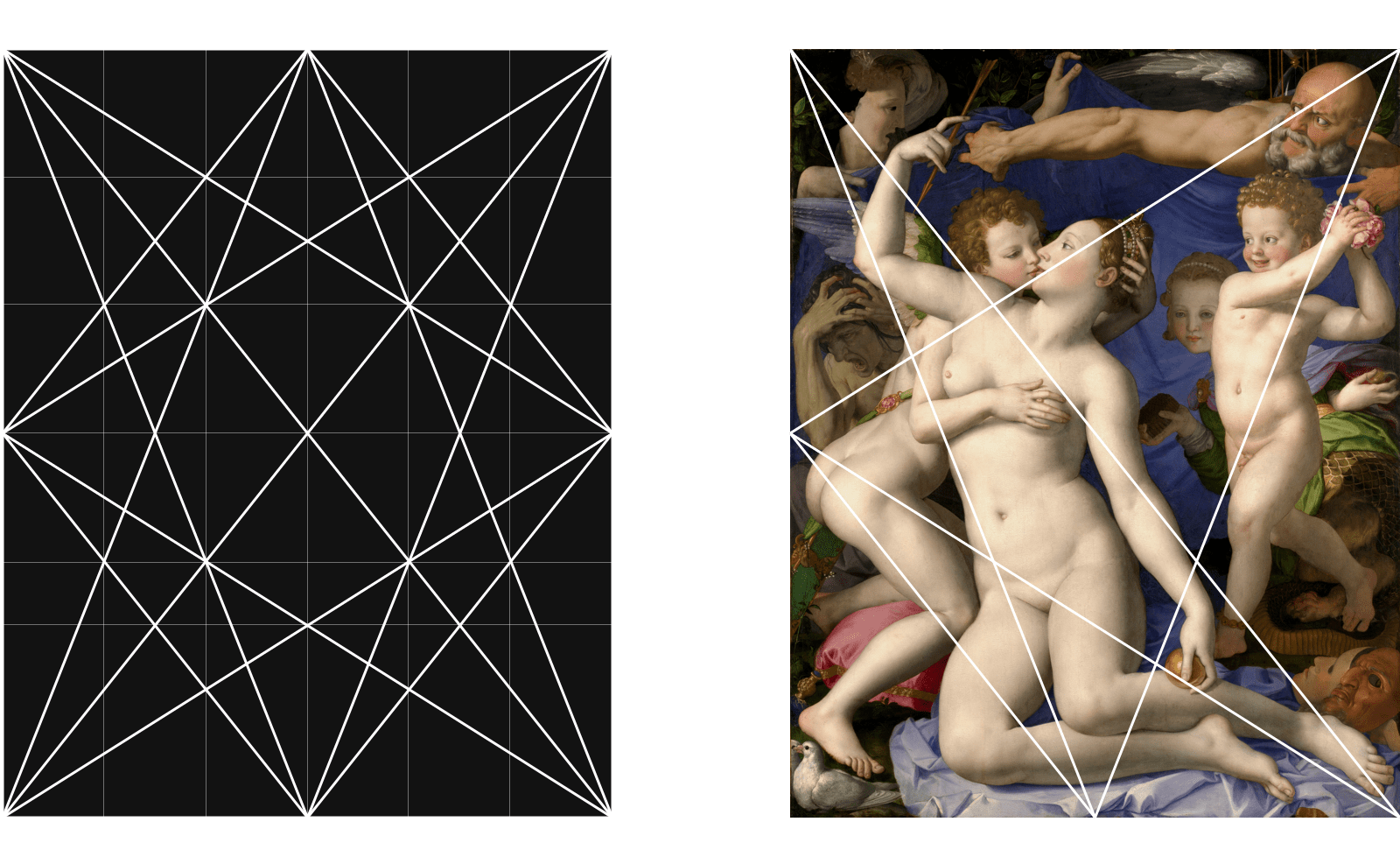 Every rectangle contains an inherent geometry. Lines from corner to corner, the two lines of rabatment, diagonals from those lines to the corners, lines drawn from the intersections of those lines, and so on. This is called the Armature of the Rectangle.
Every rectangle contains an inherent geometry. Lines from corner to corner, the two lines of rabatment, diagonals from those lines to the corners, lines drawn from the intersections of those lines, and so on. This is called the Armature of the Rectangle.
The Armature of the Rectangle looks like a conspiracy theory—a network of lines and intersections so dense that you could probably slap it on top of any artwork and find some element that aligns. And that's exactly the point. The Armature is not a recipe for creating a pleasing composition, it's a tool to help the artist become aware of the geometry of their canvas. The Armature has been used in many ways over the centuries. Artists typically placed focal points at critical intersections, aligned figures to diagonals, or blocked out space using vertical and horizontal divisions. The beauty of the Armature is that it is not chosen, it is innate. No matter if the artist knowingly engages with it, knowingly thwarts it, or creates in blissful ignorance or it, the armature is always there.
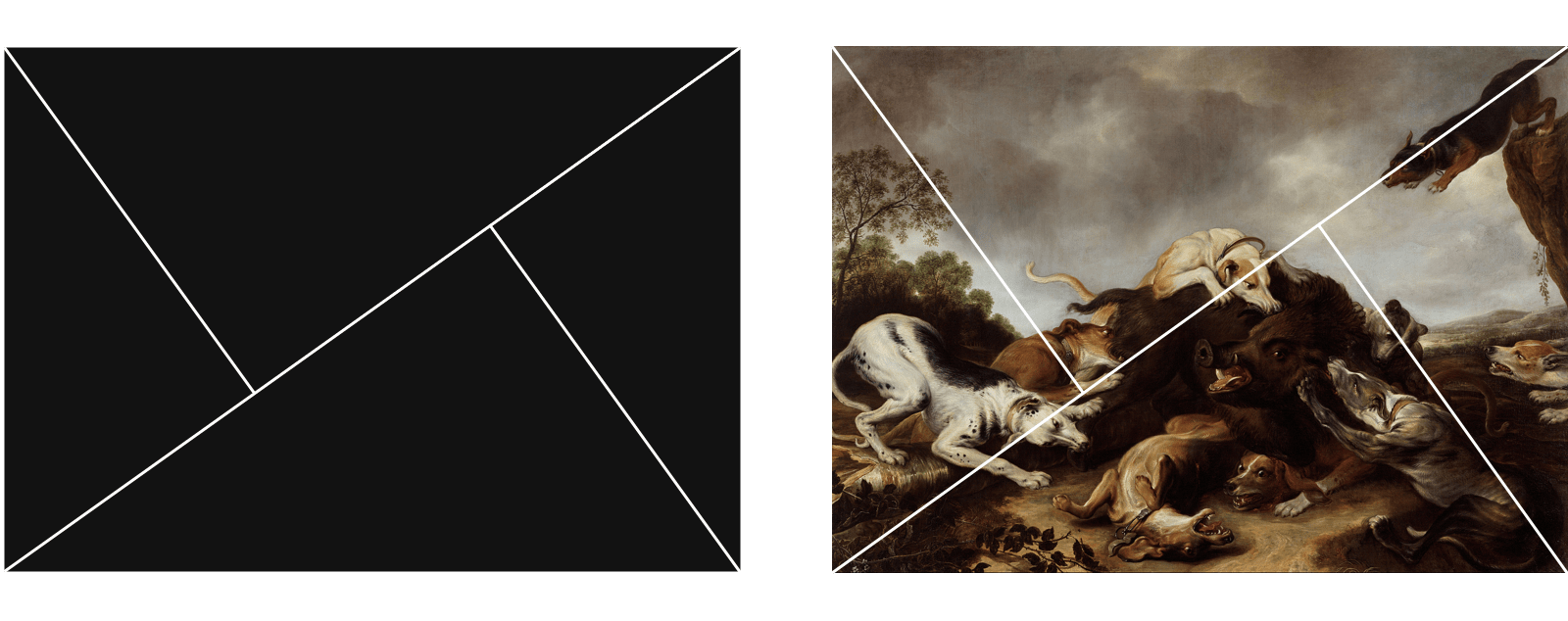 Dividing a rectangular space by its diagonal and drawing lines down from the corners to intersect perpendicularly with this diagonal forms an aggressively dynamic composition.
Dividing a rectangular space by its diagonal and drawing lines down from the corners to intersect perpendicularly with this diagonal forms an aggressively dynamic composition.
The Golden Triangle rarely appears in discussions of composition, and examples of its use are few. However, we wanted to include it here since it is simple to construct, and creates a dramatic flow within the space. Also, the name 'Golden Triangle' sounds enticingly esoteric. If you find or create an artwork that uses this unusual composition, let us know.
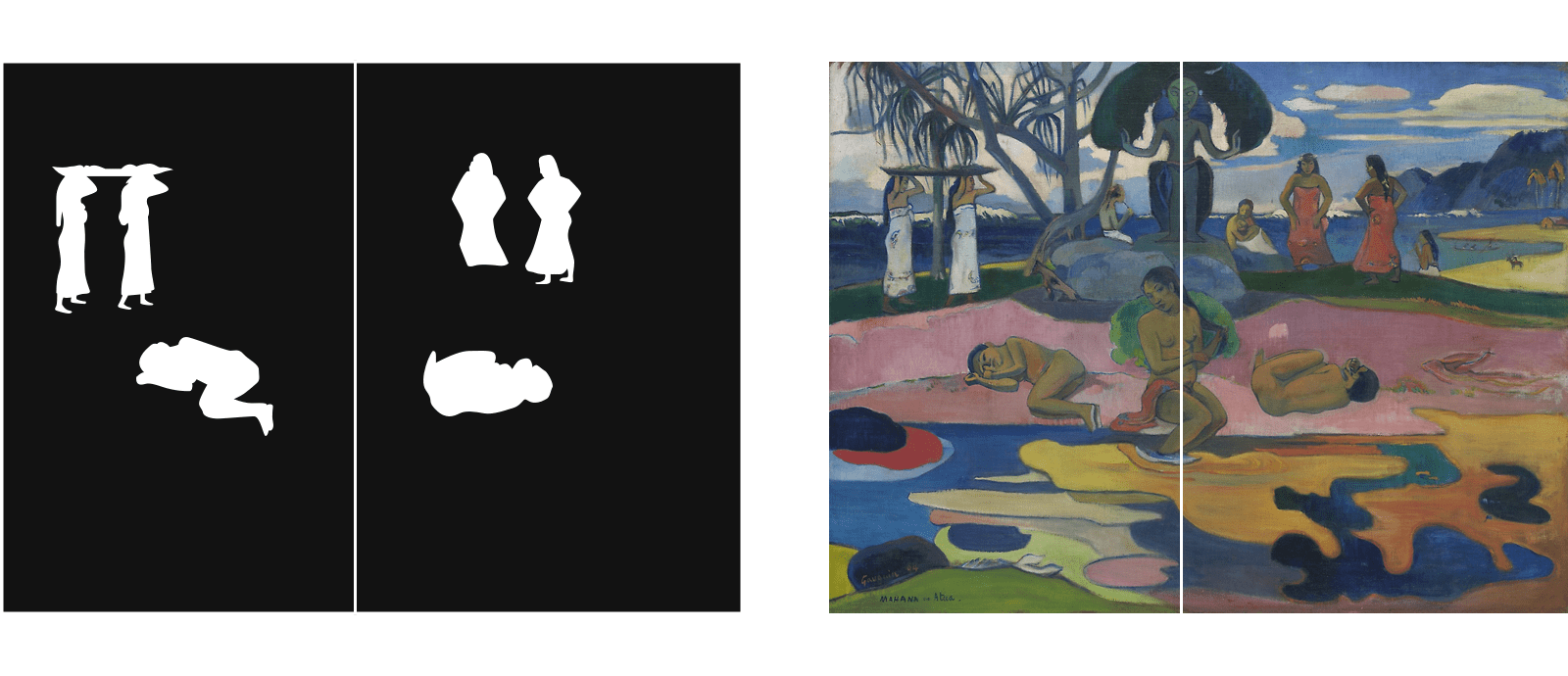 Perfect vertical or horizontal symmetry can be frustrating to the eye (see basic composition) but balancing an equal weight of forms on either side of a central focal point can form a pleasing composition.
Perfect vertical or horizontal symmetry can be frustrating to the eye (see basic composition) but balancing an equal weight of forms on either side of a central focal point can form a pleasing composition.
Strictly symmetrical compositions fall in and out of fashion through history, from the formal religious symmetry of medieval altarpieces to the complex radial symmetry of Islamic patterning, to the geometric symmetry of modern minimalism, but one form of symmetry can be found in almost every era and culture: symmetrical balance. If there is a central focal point in a composition, and the visual weight of figures or focal points on each side of this center appear equal, the composition is symmetrically balanced, even if the central focal point is not in the exact center of the overall composition.
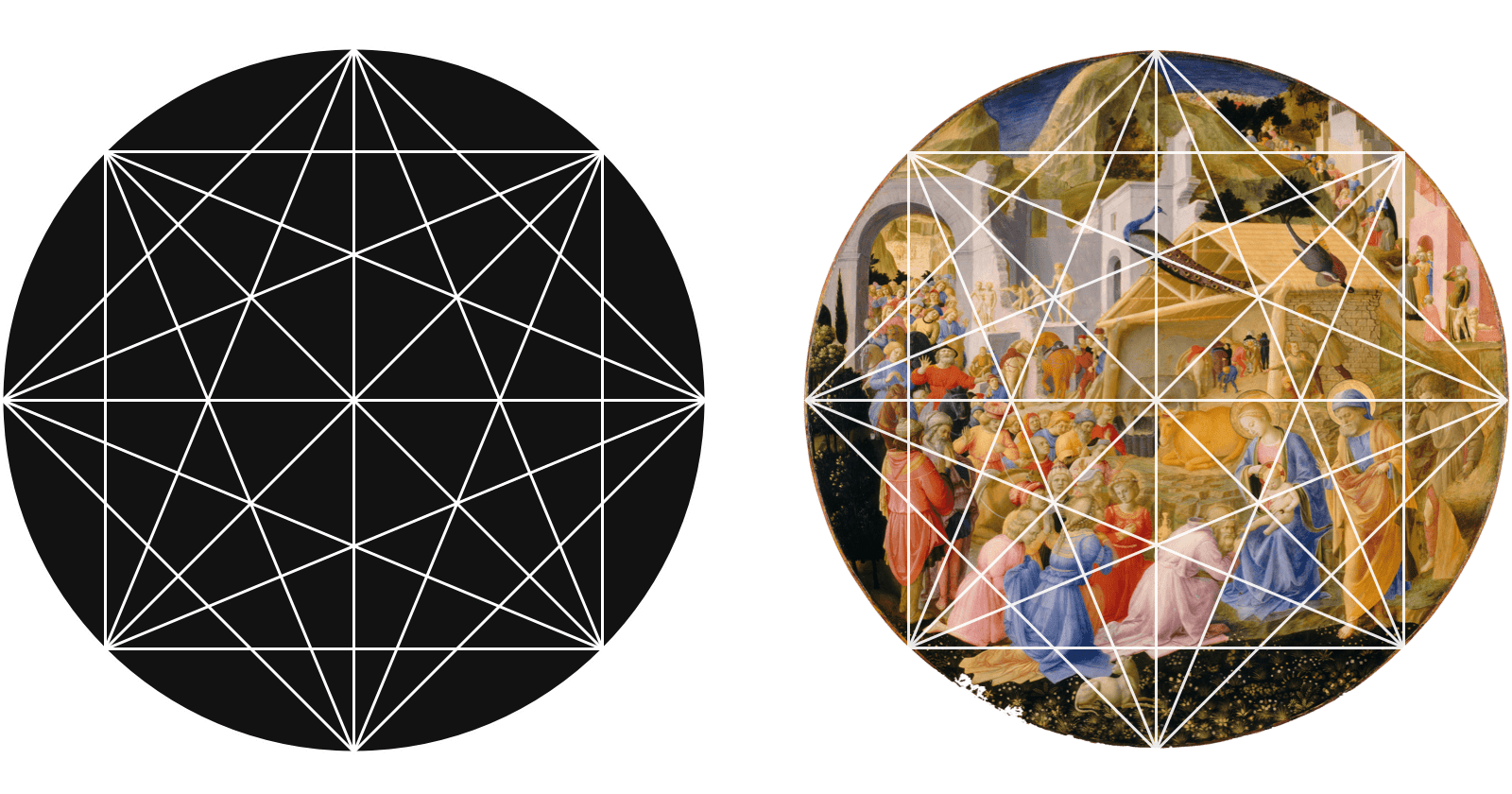 Divide a circle in half through the center, then divide it again and again into eight 'slices'—from each point where the dividing lines intersect with the circle's edge, draw lines to intersect with the other intersection points. This armature of the circle provides useful structure when creating compositions within a circular space.
Divide a circle in half through the center, then divide it again and again into eight 'slices'—from each point where the dividing lines intersect with the circle's edge, draw lines to intersect with the other intersection points. This armature of the circle provides useful structure when creating compositions within a circular space.
The medallion composition has been used in decorative art for thousands of years, appearing with many variations in Islamic patterning, romanesque tilework, and stained glass. In western art, the medallion begins appearing in figurative artwork in the 13th century, when the rose windows of Gothic architecture began influencing medieval manuscript illuminators. Didactic examples of composition using medallions appear in the Psalter of Blanche of Castille. Since the Middle Ages, the medallion has been used in round compositions like tondos, and inserted into rectangular compositions, though rarely with the formality found in the Gothic illuminations. More often compositions will imply circular movement, but without the rigidity of the medallion armature.
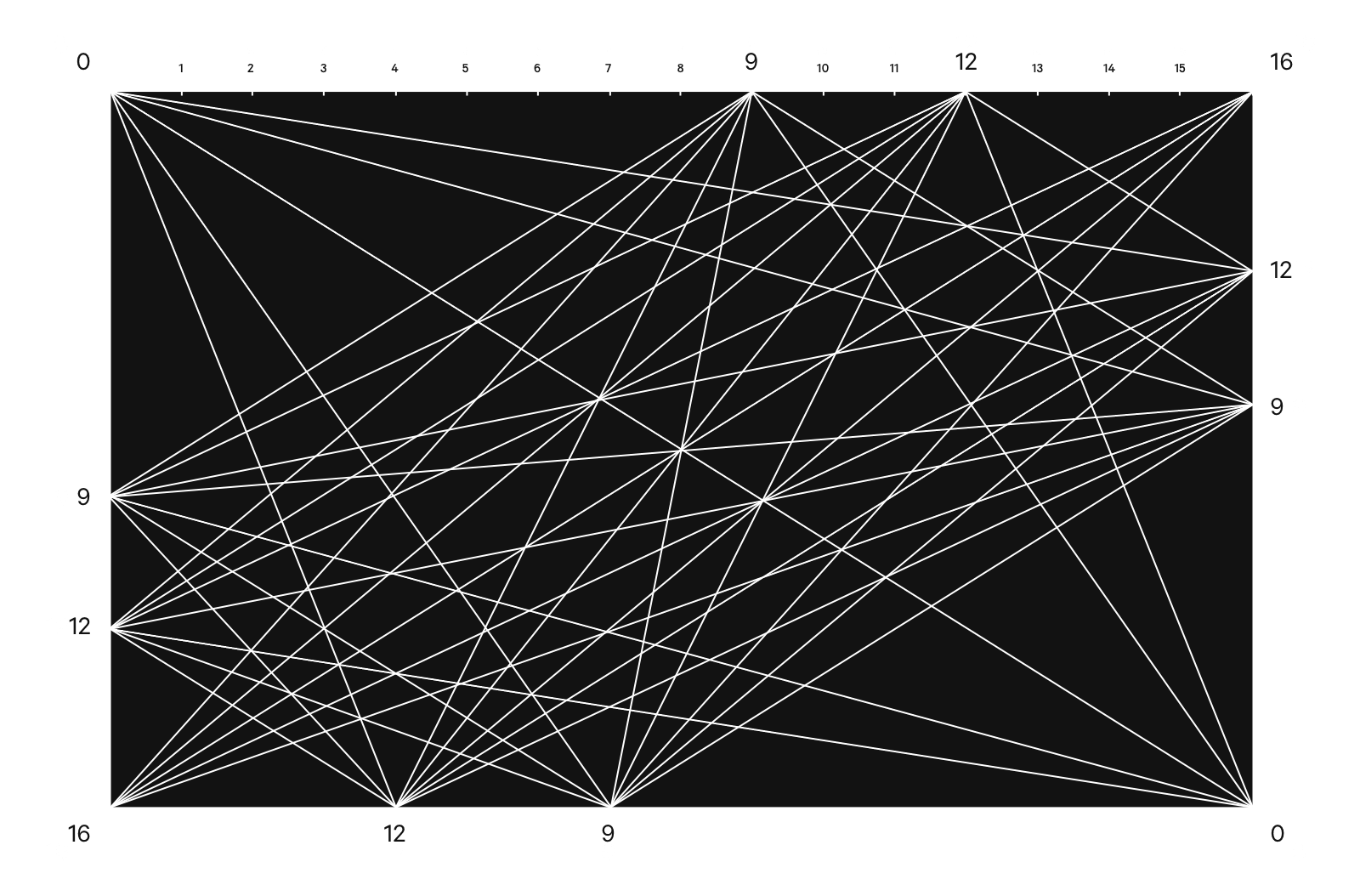 In music theory, the difference between two notes on a scale is called an interval, and according to Italian artist, architect and author Leon Battista Alberti, the intervals between harmonious notes could be visually harmonious as well, when used as ratios in composition.
In music theory, the difference between two notes on a scale is called an interval, and according to Italian artist, architect and author Leon Battista Alberti, the intervals between harmonious notes could be visually harmonious as well, when used as ratios in composition.
If the armature of the rectangle looks like a conspiracy theory, Albertism looks like full-on black magic. Even if you are well-versed in music theory it’s difficult to get your mind around how Alberti and the renaissance artists used musical ratios to construct and divide their canvases. Alberti drew his ratios from the length of the strings required to play complimentary notes, picking and choosing from wide array of musical scales, focusing on the following ratios:
Alberti’s theories were obtuse even when he wrote them, and artists adapted his ideas in a wide variety of esoteric and disconnected ways. So why are we talking about a seemingly arbitrary composition method? Because it helps us understand why some very strange decisions were made in one of the most famous paintings of all time.
In 1484, Sandro Botticelli painted one of the most famous artworks of the Italian Renaissance, The Birth of Venus. And this particular painting is absolutely confounding in its composition. Traditionally the composition would be symmetrical, venus in the center of the canvas. Botticelli places her ever so slightly off-center, leaning toward the right side. The subtle asymmetry is infuriating, and without knowing that artists during this phase of the Italian Renaissance were obsessed with Albertism, it's seemingly inexplicable.
Here's how Alberti's cryptic musical ratios could be applied to a canvas. According to Charles Bouleau, one of Botticelli's favorite ratios was the double diatessaron, or 9/12/16. To see how Botticelli may have composed the Birth of Venus, we divide each side into 16ths, Then create an armature of intersecting lines, not from the center or rabatments, but from the points that correspond to the double diatessaron ratio, that is: 9/16ths, and 12/16th. To create the tilted asymmetry, Botticelli counted from the top left and bottom right corners of the canvas, creating a diagonal focal division through the center of the canvas, and a series of dynamically skewed focal lines that he mapped his composition to with religious accuracy.
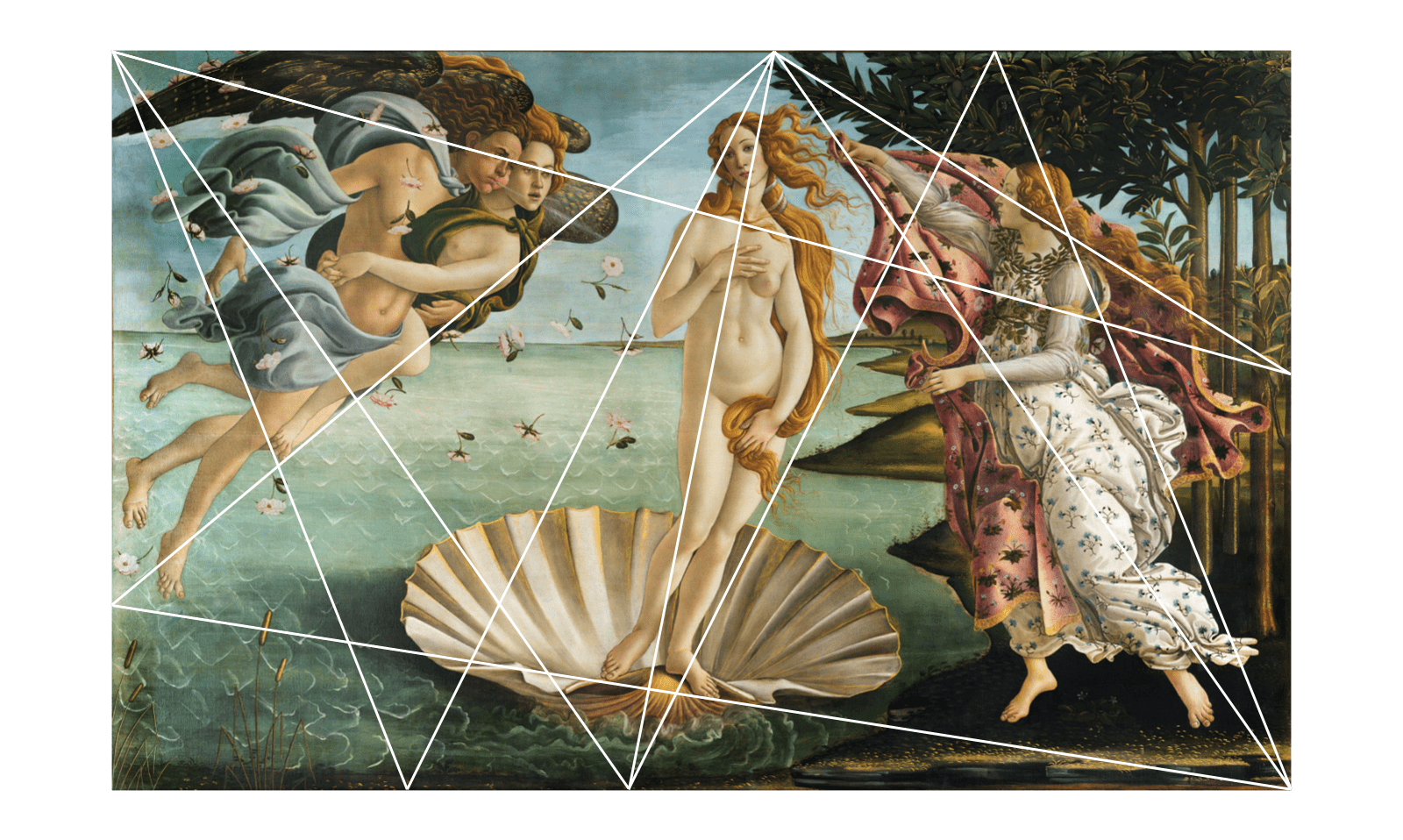 With Alberti's rhythmic ratios mapped onto Botticelli masterwork, the underlying composition snaps into focus. And this is only a single example. To see more, pick up a copy of The Painter's Secret Geometry to see how Bouleau tracks down Alberti's ratios in many of Botticelli's great works and in other renaissance paintings.
With Alberti's rhythmic ratios mapped onto Botticelli masterwork, the underlying composition snaps into focus. And this is only a single example. To see more, pick up a copy of The Painter's Secret Geometry to see how Bouleau tracks down Alberti's ratios in many of Botticelli's great works and in other renaissance paintings.
...
Artists through history have delved into mathematics, philosophy, music, and the science of their day to uncover new methods for creating pleasing and balanced compositions. Understanding these methods transform how we see artwork, giving us a peek at the rigor, planning and care that hide behind a finished artwork. And personally, we hope that examining these old methods will inspire a new generation of artists to apply some of the formal compositions of the past. Creativity doesn't necessarily mean breaking the rules. Sometimes creativity is creating your own rules, or finding a new way to apply old ones.